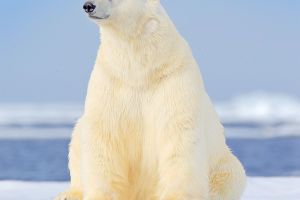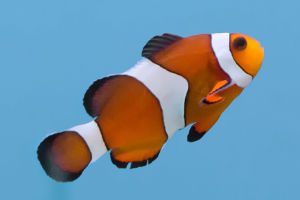Dolphins are aquatic mammals belonging to the Delphinidae family under the Odontoceti suborder. They are one of the smartest, most agile, and most popular marine animals in the world.
Typically, dolphins have streamlined bodies with pointed front ends, and their backs are deep blue or gray while their bellies are light-colored or white. Their hind limbs have degenerated into inconspicuous bones that have become vertical tails.
This tail is long and robust, helping them swim quickly and even leap out of the water. Dolphins' eyes are on both sides of their heads' top, and their nostrils are in a recess at the head's center. They breathe air through their nostrils, but they can stay underwater for extended periods.
Dolphins have a fairly high intelligence, said to be smarter than chimpanzees. Their brains are more developed than human brains, having very complex social systems and language.
Dolphins are usually group-living animals communicating through various sounds and postures. These sounds include clicks, whistles and squeals, conveying different messages such as warning, courtship, territory definition, etc.
Dolphins mostly feed on fish, squid, and crustaceans, and sometimes prey on small mammals. They move rapidly through the ocean, reaching speeds of up to 60 miles per hour, and can remain underwater for up to 15 minutes. Dolphins also surf, leaping out of the water and performing various aerial maneuvers like flips, jumps, and spins.
Dolphins are popular marine animals often displayed in aquariums and marine parks. However, their numbers are gradually decreasing due to overfishing and environmental pollution effects. Various measures, such as fishing bans and pollution controls, have been taken internationally to protect this precious marine life.
In addition to their basic features, dolphins have many other unique characteristics. For instance, they possess highly sensitive hearing and vision capabilities, recognizing objects and sounds underwater and discerning direction and distance.
Moreover, they are highly adaptable animals capable of survival in various environments, including the coastal, open sea, and deep sea.
Furthermore, dolphins have rich social behaviors and cultural traditions. They form groups and establish close relationships and social hierarchies between them. There exist many interactive behaviors among dolphins, such as petting, kissing, and shoulder-riding, indicating complex emotions and cognition.
Besides, dolphins are highly skilled at learning and innovation. They adjust their behavior according to different environmental demands and threats and can acquire new skills and behaviors through imitation and learning.
Dolphins are highly valuable animals for study and protection. Their intelligence, agility, and adaptability make them stand out in the ocean, while their social behaviors and cultural traditions indicate complex cognition and emotions.
We should take measures to protect these precious creatures to ensure their continued survival and reproduction in their natural habitats.


